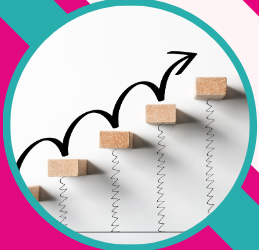Every purchase is a journey. Understanding this journey is key to improving your marketing and sales performance.
In this article, we'll guide you through the process of mapping your buyer's journey so you can generate more opportunities and close them faster.
What are the stages of the buyer journey?
Your company's buyer journey is unique. But most buyer journeys can be broken down into the same few phases. The 'Stages of Awareness' is a handy model to help you break your buyer journey down into manageable steps.
#1 - Problem aware
These buyers are aware they have a problem but don’t know how to solve it. They’ll typically be researching their pain points and trying to understand why they’re happening.
#2 - Solution aware
They’re aware there is a solution but don’t know which to choose. These buyers will be researching different solutions and deciding which is the best fit for their business.
#3 - Vendor aware
They’re aware of your company but haven’t yet made the final purchase decision. These buyers will be comparing different vendors and seeing which seem the most credible, trustworthy and price-competitive.
#4 - Most aware
They have made the final purchase decision and are ready to take action. These buyers are waiting for the right time and may be encouraged to take action by messaging that creates a sense of urgency or scarcity. They may also have final questions around the working relationship and whether there are any guarantees.
It’s worth noting that while this ‘buyer journey’ may look a little like a ‘sales funnel’, it is actually quite different. Your sales funnel relates to your internal processes. The customer journey is all about your customer. And the best way to understand your customers is to engage in customer research.
How should I research my buyer journey?
One of the biggest challenges when mapping out your buyer journey is to genuinely see things from your customer's perspective. When mapping out your buyer’s journey, try to forget completely about your existing sales and marketing processes. Instead, we’d recommend that you interview some of your own customers to understand their decision-making process.
Obviously, the more customers you speak to, the more reliable your insights will be. But speaking to just five customers can generate a lot of useful information.
Here are some good questions to ask:
- What made you seek us out?
- Did you try any other alternatives before us?
- How did you discover us?
- What made you decide to buy?
- Did we answer all of your questions or objections during the sales process?
- Was there anything we could have done better?
These insights can be combined with internal insights such as conversations with sales and your CRM data to give a well-rounded perspective.
Try to avoid rounding up your team for an impromptu brainstorm. While they can be fun, they tend to lead teams to double down on their existing assumptions, rather than uncover new insights.
How to use your buyer journey map
The ultimate goal of doing this is to better understand the questions your customers are asking as they progress, as well as any underlying anxieties they have about proceeding.
These questions can be…
- Economic - What value will they get from this? What’s their return on investment?
- Emotional - How are they feeling? Nervous, excited, reassured?
- Social - How does this look internally? What other stakeholders do they need to convince?
Sales and marketing should work together to answer customers’ questions, address their anxieties and make sure that they’re hearing or seeing what they need to progress to the next stage.
Here are a few quick examples:
- Problem-aware - you could create content digging into the pain points and showing why they happen and the negative impact they have
- Solution-aware - a detailed explainer showing how you recommend they solve those pain points
- Vendor-aware - case studies and testimonials showing how you solved those problems for other customers
- Most aware - a detailed sales proposal with easy-to-understand pricing and FAQs
At every stage of the buyer journey, you want to have everything you need in place to move the deal forward. This will increase the efficiency of your sales and marketing process and make sure that you’re hitting the right people with the right message at the right time.
Analysing and optimising your buyer’s journey
Once you’ve mapped out your buyer’s journey, you can analyse your sales data to see how customers progress through it and where deals are getting stuck. If you see lots of deals slowing down or stalling at a certain point, that’s a good area of focus to work on.
It’s good practice to assign responsibility for the different stages of the buyer journey to members of your team to make sure that everyone knows who’s responsible for which parts. Marketing are typically responsible for the early stages, sales are responsible for the later stages. Although ideally, you want both teams to work closely together on the entire journey.
Continuously analysing your buyer’s journey will help you increase efficiency over time, bringing down the cost and time taken to close deals.
Want to speed up sales? Understanding your customer is key
Understanding your buyer’s journey helps you see your sales process from your customer’s perspective. This makes it easier for customers to buy from you and makes your sales and marketing activity more effective.




